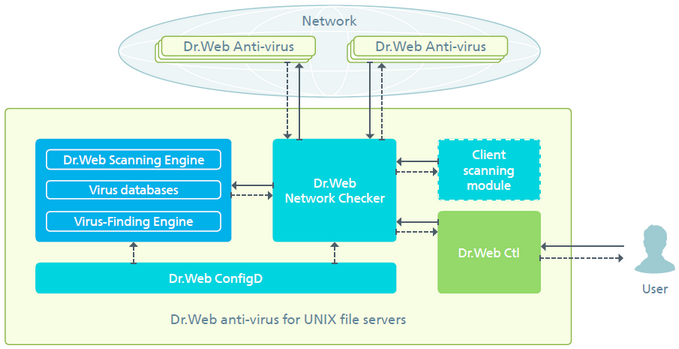Dr.Web Network Checker allows to establish connection between one host and a set of other hosts which have Dr.Web for UNIX File Servers (or other Dr.Web for UNIX servers solution version 10.1 or above) installed on them. This will provide for a distributed file scanning. To create and configure a "scanning cluster", the component runs an instance of the distributed scanning agent Dr.Web Network Checker on each host that is to be included in the cluster.
On each of the hosts within the cluster, Dr.Web Network Checker enables automatic distribution of scanning tasks by sending all available hosts data to scan. At that, the agent balances the load caused by file scanning. The load balancing is based on the amount of available resources (that is, the number of child scanning processes of Dr.Web Scanning Engine on the host). The agent also considers the queue of files waiting for scanning. Data received for scanning over the network are transmitted to the scanning engine Dr.Web Scanning Engine, as it is shown in the picture below.

Picture 45. Component operation scheme
Any host within a "scanning cluster" can be both a client sending files for scanning and a server receiving files for scanning from other hosts. If required, Dr.Web agent for distributed scanning can be configured so as to assign a host only one role and set it to perform either the functions of the server or the functions of the scanning client.
On a local host, scanning can be started both at user's command specified via the command-line management tool and at requests received from some product components, for example, Dr.Web ClamD component, which provides the interface of clamd daemon included in ClamAV®. That is why the scheme contains an abstract "Client scanning module". Note that such modules use the Dr.Web Network Checker agent for transmitting files to be scanned, even if Dr.Web Scanning Engine is located at the local host.